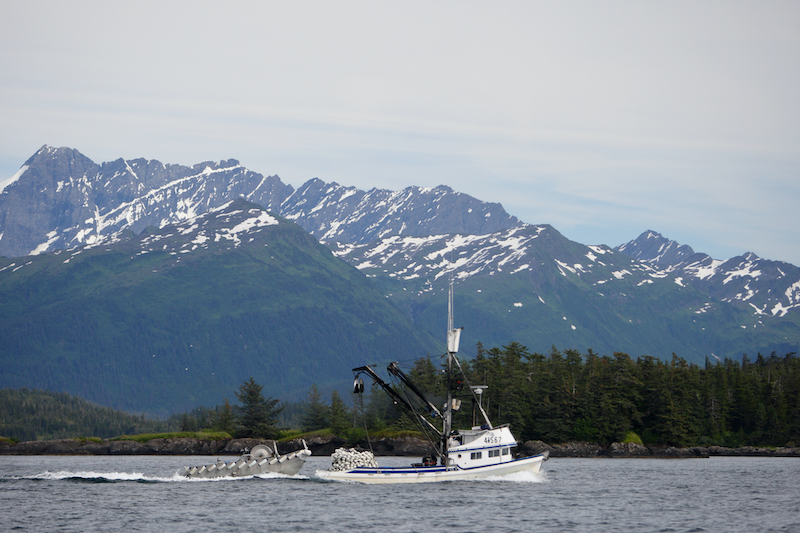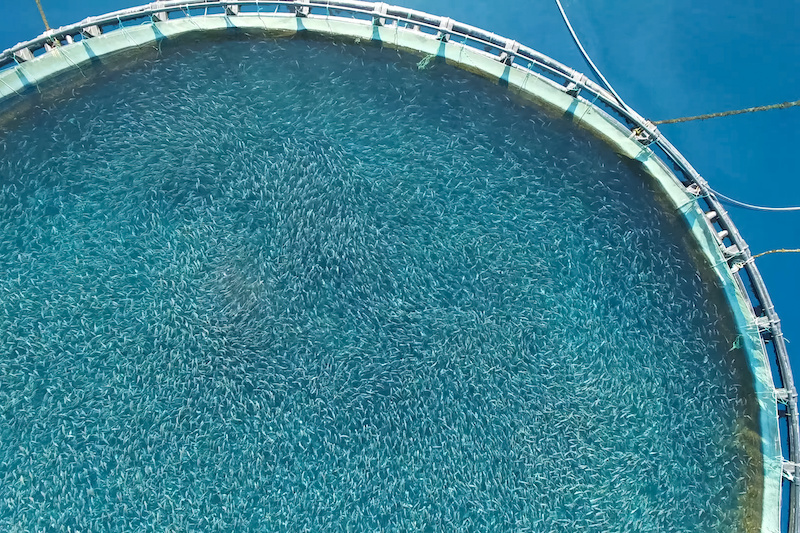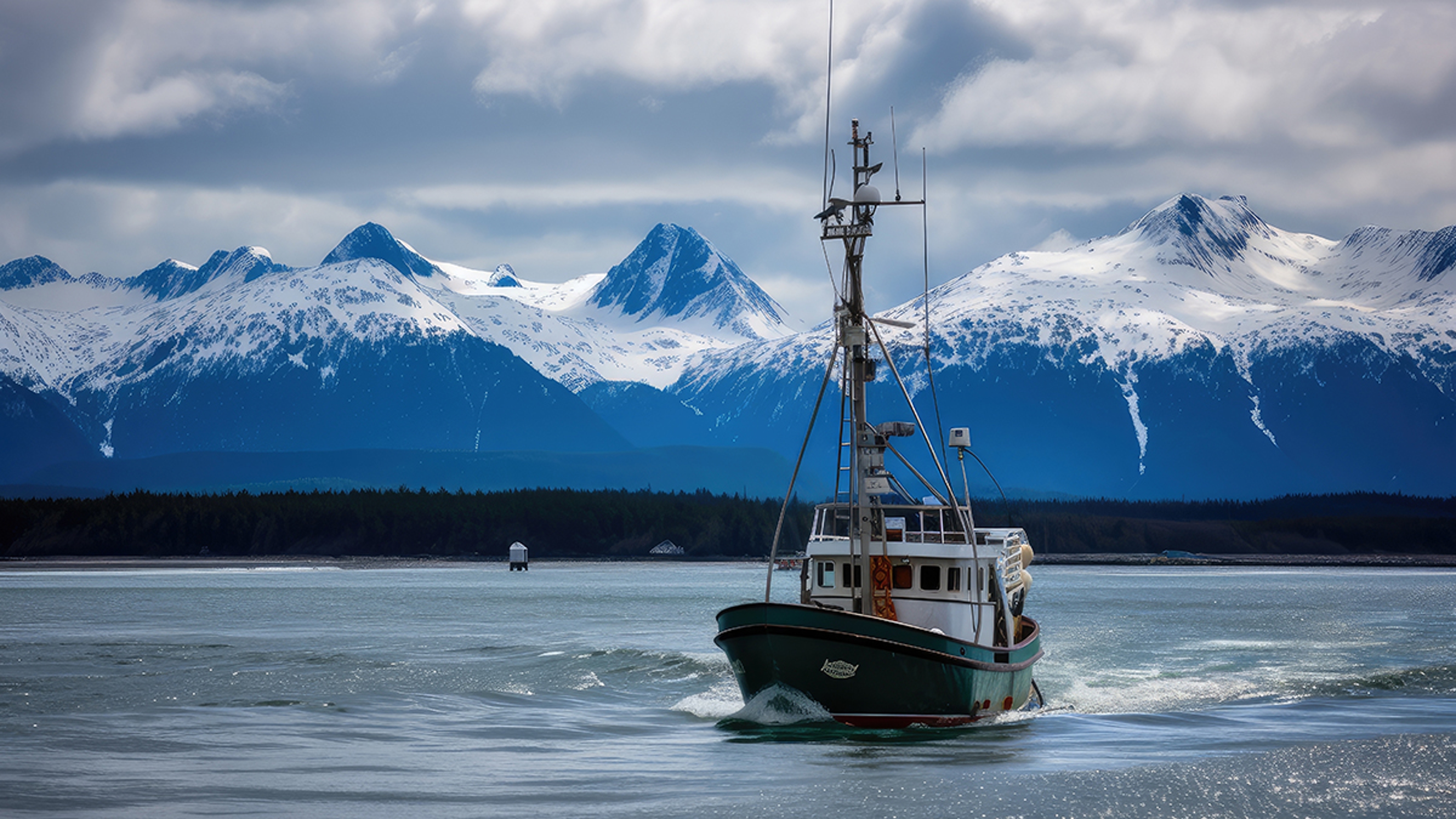Alaska & Seafood: A History of Conservation
Alaska has what may be the world's most robust seafood-protection policies.
May 15, 2024
If you're eating wild-caught salmon in the United States today, there's a good chance it came from Alaska. Fishermen there sustainably catch more than 200 million salmon every year.
But it could have turned out very differently. It's worth taking a moment to consider just how rare pristine wild-caught fish have become...
...and that the continuing health of Alaska's extraordinary resource is no accident.
Eve of destruction
In the 1950s, decades of mismanagement brought Alaskan salmon populations to the brink of devastation. At the time, rampant overfishing meant that half as many fish were being harvested per year than in the 1930s.
The crisis led Alaska, which had just received statehood, to take decisive action. Its aim: to save a way of life that had sustained families for generations.
Today, Alaska is home to some of the best-managed fisheries in the world, situated in the clean ocean waters surrounding our northernmost state.

It's also where Vital Choice sources much of its salmon and other seafood. Strong collaborations between scientists, policymakers, and fishermen have created a robust, sustainable fishing industry. Alaska now provides millions of pounds of seafood to the nation while ensuring the health of future fish populations.
MORE: Where Does Vital Choice Fish Come From?
That's good news for seafood lovers everywhere. Salmon is one of the best sources of omega-3 fatty acids, vitamin D, and antioxidants. Fish are a great source of nutrient-rich protein, too. That makes wild-caught salmon a tasty way to keep your body healthy.
The life of Alaskan salmon
Massive Bristol Bay in western Alaska is the destination for millions of salmon born in freshwater rivers such as the Kvichak, Naknek, Egegik, Nushagak, and Ugashik in Alaska's wild interior.
Young chinook, chum, coho, pink, and sockeye salmon are born in pristine gravel beds. Then, depending on the species, they mature in clean, unspoiled rivers and lakes, eating zooplankton and small crustaceans. When they're big enough, the salmon migrate to the ocean, transitioning from freshwater to saltwater. Perhaps of greatest significance, their journey is unimpeded by dams, industrial salmon farms, and other human obstacles that have harmed so many wild salmon populations in other parts of the world.

Salmon spend a few years in the open ocean, feasting on small fish, crustaceans, and other prey rich in omega-3 fatty acids and other healthy nutrients. When it's time for them to mate, mature salmon venture back into the rivers they were born in. They fight their way upstream to ancestral breeding grounds to find a partner.
Salmon fishermen take advantage of the annual Alaskan salmon run, one of the largest in the world, to harvest their catch. Today, an Alaska fishermen can haul in more than 800 million pounds of salmon a year. That's a lot of fish; more than 200 million, to be precise. But such a haul is only possible because state regulators make sure to carefully monitor the numbers to ensure that enough salmon make it through to mate and create the next generation of fish.
Today, the wild Alaskan salmon harvest is overseen by the Board of Fisheries and the Alaska Department of Fish & Game, supported by scientific advisers. Researchers at the Alaska Fisheries Science Center and elsewhere use field research and mathematical models to estimate the health of fish populations every year. Officials then use that data to set yearly quotas limiting the number of salmon harvested to sustainable levels.
Maintaining sustainable fisheries
Managing a complex ecosystem to preserve it for future generations takes a lot of work. Researchers must keep tabs on not only the salmon but also the ecology of the northern Pacific and Arctic oceans, as well as the Bering Sea.
Researchers and fishery officials use studies that look at the health of the ecosystem as a whole and monitor the size and health of fish populations. They then combine that knowledge with laboratory studies and statistical modeling to create an accurate picture of the health of Alaskan fisheries. The result is a closely monitored and certifiably healthy wild ecosystem that can sustain commercial fishing without compromising natural resources.

In addition to scientific expertise, Alaskan fisheries also benefit from strong legal protections. Indeed, the principles of sustainable fishing are written into Article VIII of the state's constitution. Fishing is prohibited in sensitive areas critical to the health of marine life. The State of Alaska employs almost 100 troopers whose sole job is to prevent illegal fishing.
All of which helps explain why Alaskan fisheries are considered some of the most sustainable in the world. They've been recognized by environmental agencies including the Marine Stewardship Council and the Global Sustainable Seafood Initiative for their environmental stewardship. Many fish from Alaska have made the “Best Choices" list from the Monterey Bay Aquarium's Seafood Watch program.
MORE: What Is the Marine Stewardship Council?
"The United States has some of the best-regulated wild fisheries in the world, especially in Alaska, where stocks of wild salmon, halibut, and other fish are all generally well-managed," Andy Sharpless, CEO of Oceana, an international ocean conservation organization, said in his book, The Perfect Protein.
Alaska also benefits from historically pure waters, the result of vast tracts of unspoiled land in the state's interior and along the coastlines. These wild spaces ensure that fish aren't contaminated with toxins like polychlorinated biphenyls (PCBs), industrial chemicals that are often found in more urban waterways.
Wild salmon, never farmed

Alaska's decades-long commitment to sustainable fishing practices has helped avoid a trend that's prevalent in other fisheries. Faced with steep demand and declining harvests, fishermen elsewhere in the world are turning to aquaculture. The fish in this system are raised in net pens, crammed together, and fed an often less-healthy mixture of feeder fish and cheap additives such as seed oil.
The fish-farming industry has exploded in recent decades in places like Norway and Scotland, both countries with a long history of fishing. Advocates say the industry is offering a more efficient way to meet global seafood demand, but environmentalists and nutritionists alike have raised concerns that the farms may yield inferior fish and harm wild stocks via escaping pathogens.
Wild Alaskan salmon populations are supported by science-backed sustainability management, and that knowledge makes for a meal that's healthy in multiple ways. But Alaskan salmon is an environmental success story that requires constant vigilance by all of us — politicians, fishing crews, Alaska residents, and consumers — so it remains the world's model for sustainable wild-fish management.







